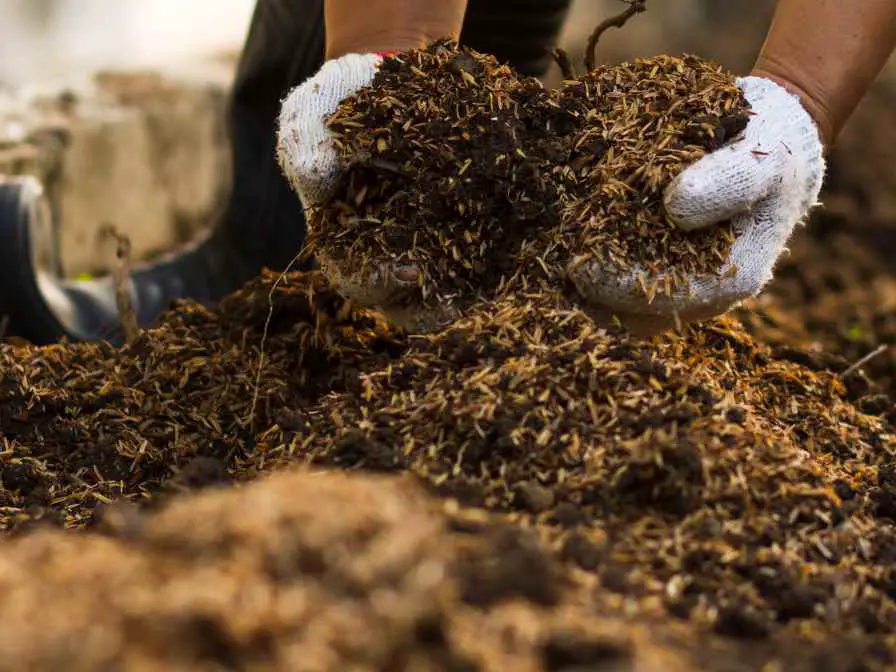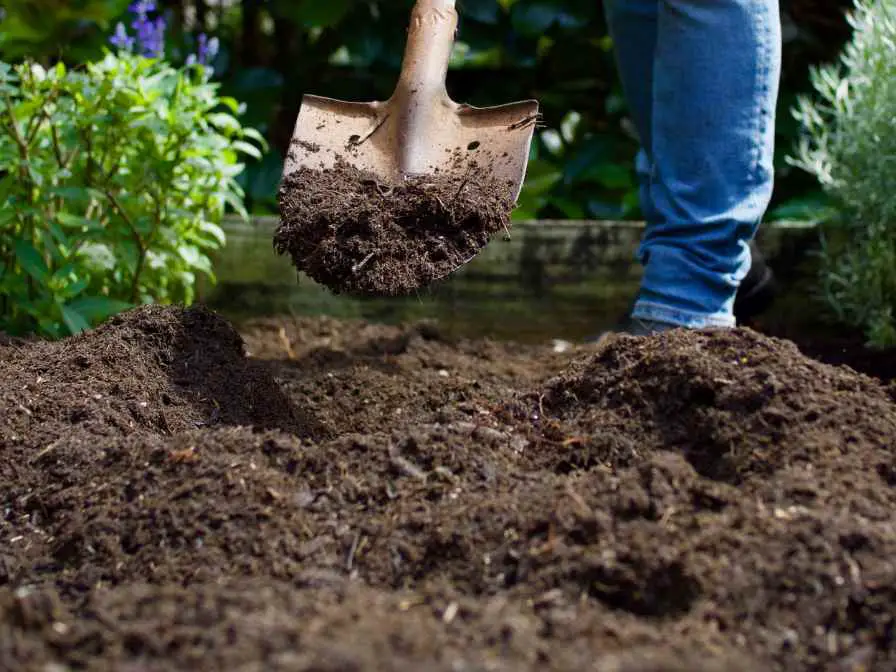When planning for the garden plant the main item that comes into mind is the garden soil. Garden soil serves as a base for all of the plants to grow well. If you are planning to act in advance, we are going to tell you about how to prepare garden soil for next year. It will give you an extra edge for gardening.

Garden Soil
Garden soil is a crucial element for successful gardening, as it serves as the foundation for healthy plant growth. It is typically a mixture of various organic and inorganic materials that provide the necessary nutrients, water retention, and drainage for plants to thrive.
Organic matter, such as decomposed plant material and animal manure, improves soil fertility by adding essential nutrients, improving soil structure, and promoting beneficial microbial activity. Inorganic materials, such as sand, clay, and silt, determine the soil’s texture, which affects its water-holding capacity and drainage properties.
The ideal garden soil should have a balanced composition of organic and inorganic materials, with the right pH level, to support the specific needs of the plants being grown. When it comes to garden soil, proper preparation and maintenance are essential for optimal plant growth.
Before planting, the soil should be loosened and cleared of any debris or weeds. It is important to test the soil’s pH level and nutrient content to determine if any amendments, such as lime or fertilizer, are needed.
Regular watering, mulching, and occasional aeration can help maintain the soil’s moisture and structure. Adding organic matter, such as compost or aged manure, on a yearly basis can replenish nutrients and promote healthy soil activity.
Good garden soil is the key to successful gardening, providing a supportive environment for plants to establish strong roots, access necessary nutrients, and produce abundant harvests.
Benefits of Preparing Garden Soil for Next Year
Preparing your garden soil for the next year can yield numerous benefits for your garden’s health and productivity. Here are some advantages of preparing your garden soil in advance:
Enhanced Soil Fertility
By using organic matter, such as compost or well-rotted manure, you can replenish essential nutrients and improve the overall fertility of the soil. This provides a nutrient-rich environment for plants to grow and thrive, resulting in better yields and healthier plants in the next growing season.
Improved Soil Structure
Properly prepared garden soil allows for better root development and penetration, which is crucial for plant growth. Organic matter helps to improve the soil’s structure by increasing its water-holding capacity, enhancing aeration, and promoting beneficial microbial activity.
This creates a favorable environment for plant roots to establish, leading to stronger, healthier plants in the following year.
Weed Suppression
Preparing your garden soil by removing weeds and their seeds before winter can significantly reduce weed growth in the next growing season. This can save you time and effort in weed control, allowing your plants to grow without the competition for nutrients, water, and sunlight.
Prevention of Soil Erosion
Properly prepared garden soil can help prevent soil erosion caused by heavy rainfall or wind during the winter months. Covering the soil with mulch or planting cover crops can protect the soil from erosion, keeping it in place and preserving its quality for the next growing season.
Time and Effort Savings
Preparing your garden soil in advance saves you time and effort in the next growing season. Having well-prepared soil means you won’t have to spend as much time and effort on amending, cultivating, or correcting soil issues during the busy planting season, allowing you to focus on other gardening tasks and enjoy a more productive garden.
How to Prepare Garden Soil for Next Year?

Preparing your garden soil for the next year involves several steps to ensure that it is in optimal condition for planting. Here is a step-by-step guide with explanations:
Clear Out Debris and Weeds
Start by removing any debris, such as fallen leaves, sticks, or rocks, from the garden area. Pull out any weeds or their roots that may have grown during the previous growing season. This step helps to prevent weeds from re-growing and competing with your plants for nutrients and space in the next year.
Test Soil pH and Nutrient Levels
Testing your garden soil’s pH and nutrient levels is crucial to determine its current condition and whether any amendments are needed. You can purchase a soil testing kit from a garden center or send a sample to a soil testing laboratory for analysis
Based on the results, you can adjust the pH or add specific nutrients, such as nitrogen, phosphorus, or potassium, to balance the soil’s fertility for optimal plant growth.
Add Nutrients in Form of Compost
Organic components like compost, well-rotted manure, or peat moss, can greatly improve soil fertility and structure. Organic matter provides essential nutrients, improves soil structure, and enhances microbial activity, creating a healthy environment for plants to thrive.
Spread a layer of organic matter evenly over the garden soil and use a rake or tiller to incorporate it into the top 6-8 inches of soil.
Mulch the Soil
Mulching is the process of covering the soil with a layer of organic or inorganic material to conserve moisture, suppress weed growth, and regulate soil temperature.
After amending the soil with organic matter, you can add a layer of mulch, such as straw, wood chips, or shredded leaves, on top of the soil. Mulching helps to protect the soil from erosion and nutrient leaching during winter, and it gradually decomposes, enriching the soil with organic matter.
Consider Cover Cropping
Cover cropping is the practice of planting specific crops, such as winter rye, crimson clover, or hairy vetch, to cover and protect the soil during the winter months.
These cover crops add organic matter to the soil, help in avoiding soil erosion, and help in improving soil when they are later tilled or mowed down in the spring. Research that covers crops that are suitable for your region and plant them according to the recommended guidelines.
Consider Soil Protection
If you live in an area with severe winter weather, you may need to take additional steps to protect your garden soil from freezing and thawing cycles that can damage soil structure. Consider covering the soil with a layer of straw or hay to provide insulation and prevent rapid temperature fluctuations that can cause soil compaction.
By following these steps, you can properly prepare your garden soil for the next year, providing an optimal environment for plant growth and maximizing your garden’s productivity. Remember to tailor your soil preparation to the specific needs of your garden and region, and consult with local gardening experts or extension offices for additional guidance.
In a nutshell, garden soil is base for the all plants. You can prepare it in advance for the next year. Even it will do better. Just make sure you follow all the basic steps. Prepare it in the season so that it can be fully prepared in the growing season next year.
FAQs
What is the best prep for the garden soil?
You can add the compost in the organic form in the garden soil. or you can go for covering the crops and mulching. These are the ways to prepare the soil for planting. You can use these techniques for next year’s preparation as well.
Which soil helps the plants grow faster
Most of the plant gets good with the loamy soil. you can add the ingredients to make the soil loamy for the different plants. It should be clear that you should learn about the soil requirements for each and every plant you are planning to plant.
How do you restore soil quality?
While preparing the garden soil for next year, this question does come to mind. You can go for soil testing or you can an expert for advice. First, get clear on what is missing and then add it. Like adjusting PH with lime etc.

